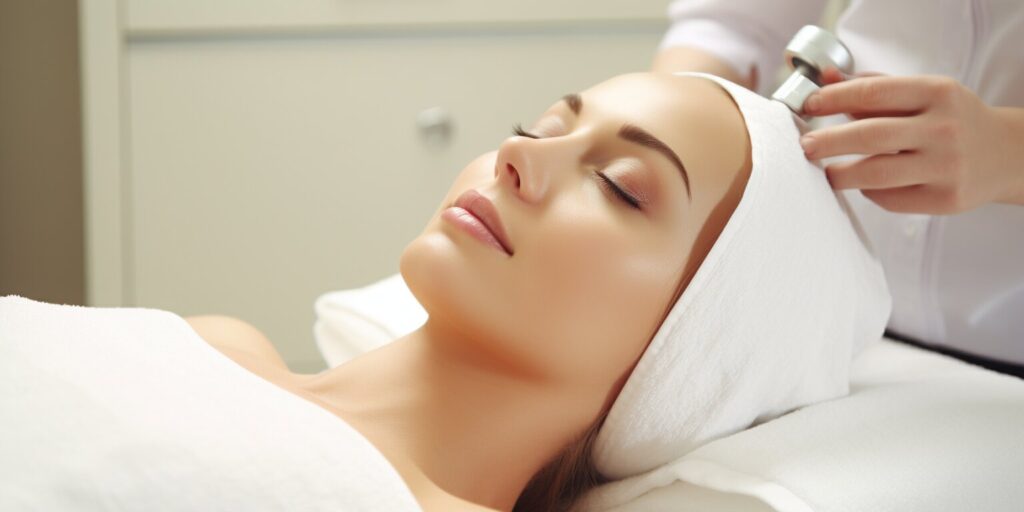Med spa treatments have gained popularity in recent years as individuals seek non-surgical solutions to enhance their appearance and well-being. These treatments, often provided in a spa-like setting by medical professionals, offer a wide range of benefits. However, to fully appreciate the advantages of med spa treatments, it’s important to understand the science behind them. In this article, we’ll delve into the science behind some of the most popular med spa treatments and explore how they work to deliver the desired results.
The Basics of Med Spa Treatments
Med spa, short for medical spa, is a term used to describe facilities that offer a combination of traditional spa services and medical procedures. These establishments provide a range of treatments, from skincare and cosmetic procedures to relaxation therapies and holistic wellness services. What sets med spas apart from regular spas is the involvement of licensed medical professionals, such as dermatologists, nurses, or aestheticians, who administer treatments that may require medical expertise.
Understanding Botox and Dermal Fillers
Botox: The Wrinkle-Reducing Wonder
Botox, short for botulinum toxin, is one of the most well-known and widely used med spa treatments for reducing wrinkles and fine lines. The science behind Botox lies in its ability to block signals between nerves and muscles, temporarily paralyzing the muscle’s ability to contract. By doing so, Botox smooths out the overlying skin, reducing the appearance of wrinkles.
When Botox is injected into specific facial muscles, it prevents them from contracting forcefully, which in turn prevents the formation of wrinkles caused by repetitive facial expressions, such as frowning or squinting. The effects of Botox typically last for several months, after which the treatment can be repeated.
Dermal Fillers: Restoring Volume
Dermal fillers, also known as soft tissue fillers, are another popular med spa treatment. Unlike Botox, which targets muscles, dermal fillers work by adding volume beneath the skin’s surface. This added volume can smooth out wrinkles, plump up lips, and restore facial contours.
The science behind dermal fillers involves the use of various substances, including hyaluronic acid, collagen, and calcium hydroxylapatite. These substances are injected into the skin, filling in lines and wrinkles while stimulating collagen production. Collagen is a protein that provides structural support to the skin, and as we age, its production decreases, leading to sagging and wrinkles. Dermal fillers help combat this by replenishing lost volume and stimulating collagen growth.
Laser and Light-Based Therapies
Laser Hair Removal: A Precise Approach
Laser hair removal is a widely sought-after med spa treatment for long-term hair reduction. The science behind this procedure involves the use of highly concentrated laser beams that target hair follicles. The pigment in the hair follicles absorbs the laser energy, which damages the follicle and inhibits future hair growth.
The success of laser hair removal depends on the contrast between the hair’s color and the surrounding skin’s color. Lighter skin and darker hair tend to yield the best results, as the laser can more effectively target the pigment in the hair follicles. Multiple sessions are usually required to achieve optimal results, as hair grows in different phases, and the laser is most effective during the active growth phase.
Photofacials: Rejuvenating the Skin
Photofacials, also known as intense pulsed light (IPL) treatments, are designed to improve the appearance of the skin by addressing issues such as sun damage, age spots, and broken blood vessels. These treatments work by using broad-spectrum light that targets specific skin concerns without damaging surrounding tissue.
The science behind photo facials involves the absorption of light energy by the pigments in the skin or blood vessels. This energy is then converted into heat, which destroys the targeted pigment or vessel. Over time, the body naturally eliminates the damaged cells, leading to a more even and youthful complexion.
Chemical Peels and Microdermabrasion
Chemical Peels: Exfoliating for Renewal
Chemical peels are med spa treatments that involve the application of chemical solutions to the skin, which exfoliate the top layer of skin cells. This process encourages cell turnover and stimulates collagen and elastin production, resulting in smoother, more youthful-looking skin.
The science behind chemical peels lies in the specific type and concentration of chemicals used. Alpha hydroxy acids (AHAs) and beta hydroxy acids (BHAs) are commonly used for mild peels, while stronger peels may use trichloroacetic acid (TCA) or phenol. The depth and intensity of the peel can be adjusted to address various skin concerns, from fine lines and wrinkles to acne scars and uneven skin tone.
Microdermabrasion: Polishing the Skin
Microdermabrasion is a non-invasive exfoliation technique that removes the outermost layer of dead skin cells, revealing smoother, fresher skin underneath. It works by using a handheld device that propels tiny crystals onto the skin’s surface, simultaneously vacuuming away the exfoliated skin cells.
The science behind microdermabrasion involves mechanical exfoliation and suction. By gently abrading the skin’s surface and stimulating blood flow, microdermabrasion promotes collagen production and can improve the appearance of fine lines, acne scars, and sun damage.
The Benefits of Med Spa Treatments
Understanding the science behind med spa treatments allows us to appreciate the benefits they offer. Some of the key advantages include:
- Non-surgical Solutions: Med spa treatments provide non-invasive or minimally invasive alternatives to surgical procedures, reducing the risks, downtime, and discomfort associated with surgery.
- Youthful Appearance: Many med spa treatments focus on rejuvenating the skin and enhancing one’s appearance, helping individuals look and feel younger.
- Customization: Med spa treatments can be tailored to address specific concerns, allowing for a personalized approach to skincare and beauty.
- Long-lasting Results: While the effects of some treatments are temporary and require maintenance, others, like laser hair removal, can provide long-lasting results.
- Improved Self-confidence: Enhancing one’s appearance can boost self-esteem and confidence, improving overall well-being.
Summary
In conclusion, med spa treatments are backed by scientific principles that explain their effectiveness in addressing various skincare and beauty concerns. Whether you’re considering Botox, dermal fillers, laser treatments, chemical peels, or microdermabrasion, understanding the science behind these treatments can help you make informed decisions about your skincare and beauty regimen. Always consult with a qualified medical professional at a reputable med spa to determine the most suitable treatments for your unique needs and goals.



